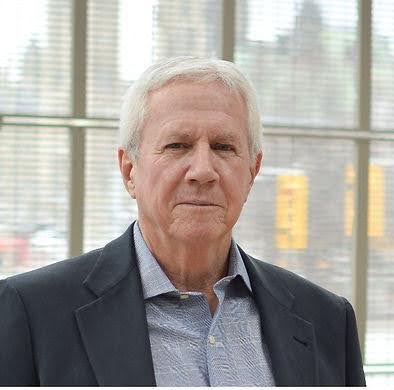Canada’s research and innovation ecosystem needs major overhaul to manage global risks and improve the economy
Canada’s research and innovation ecosystem can help manage global risks and boost the economy but requires a major structural overhaul to do so, panellists said at Research Money’s annual conference in Ottawa.
 “Canada’s research and innovation ecosystem should be treated as a national asset, a strategic engine that can help us respond to global risks and capitalize on emerging opportunities,” said Shannon Storey (photo at right), president and CEO of Ottawa-based Global Advantage Consulting Group.
“Canada’s research and innovation ecosystem should be treated as a national asset, a strategic engine that can help us respond to global risks and capitalize on emerging opportunities,” said Shannon Storey (photo at right), president and CEO of Ottawa-based Global Advantage Consulting Group.
The federal government invests $9 billion of public money annually in research and development, the vast majority of it flowing to the higher education sector, she said.
Despite repeated attempts to launch national research and innovation strategies, “we’ve seen relatively little to no movement in [national] R&D investment and we remain well below our peers,” Storey said during a panel session titled “Turning Global Risks into Opportunities for Canada.”
Canada needs to streamline the more than 130 government programs that support research and innovation, “many of which have overlapping objectives and limited visibility,” she said.
In doing so, the country must support Canadian firms to scale up and align policy levers such as tax, trade and government procurement, Storey said. “Collectively, we need to ramp up a new unifying structure and process in the context of a research and innovation strategy.”
.jpg) Of Canada’s more than 130 government innovation programs, all but one lack key performance indicators to assess their impact on improving the economy, productivity and Canadians’ wellbeing, said Senator Colin Deacon (photo at right), independent senator for Nova Scotia.
Of Canada’s more than 130 government innovation programs, all but one lack key performance indicators to assess their impact on improving the economy, productivity and Canadians’ wellbeing, said Senator Colin Deacon (photo at right), independent senator for Nova Scotia.
“We’ve got to stop funding programs and start funding market-based investment in problems that are important in Canada, and stop having government declaring where money should go,” he said
Deacon said the one innovation program that does have key performance indicators is Innovation Solutions Canada (ISC), designed to support Canadian innovators by providing funding to develop and test solutions to problems faced by federal departments and agencies.
After five years of operating, ISC was returning $1.35 and $3 in GDP growth for every public dollar invested, he noted. Yet the government cut ISC’s program funding in half after several federal departments and agencies – especially the Department of National Defence – failed to meet ISC’s spending and procurement targets.
“It’s not fair to think that innovation can emanate from Ottawa. Ottawa has to enable innovation to occur across this country,” Deacon said.
Likewise, federal public servants sitting in Ottawa insulated from the rest of the country shouldn’t be deciding on how to best support entrepreneurs and innovation that requires risk-taking, he said.
“Public servants are not designed to take risks. They’re designed to run a system and avoid risks,” he added.
“We’ll never solve these problems if we use the systems we currently have. We have to find a way to mobilize our entrepreneurs and innovators in this country to use our research.”
“The status quo is delivering us the results we are getting today. It’s delivering us declining prosperity for the next 30 years, according to the OECD,” Deacon said.
 Canada needs to shift from an innovation ecosystem focused on sectors and regions to one focused on mission-driven innovation, said Alexander Zelenski (photo at left) senior polycrisis analyst at the Institute for Collaborative Innovation.
Canada needs to shift from an innovation ecosystem focused on sectors and regions to one focused on mission-driven innovation, said Alexander Zelenski (photo at left) senior polycrisis analyst at the Institute for Collaborative Innovation.
The country needs to create local innovation ecosystems driven by grassroots organizations to establish a “creative commons,” he said. This will engage citizens who will socialize innovation because it directly impacts and benefits them.
 Canada lacks the right type of capital and ecosystem to adequately support entrepreneurs, said Anastasia Mourogova Millin (photo at right), founder of Montreal-based Ombrello Solutions and DanSa Capital Innovation.
Canada lacks the right type of capital and ecosystem to adequately support entrepreneurs, said Anastasia Mourogova Millin (photo at right), founder of Montreal-based Ombrello Solutions and DanSa Capital Innovation.
The country has essentially adopted venture capital models from the U.S. that were created for certain types of companies where the mindset is to create the solution, sell the scaling company and intellectual property, and exit, she said.
“So often even if there’s IP [with the innovation] it won’t stay in Canada because the venture capital doesn’t come out of Canada,” she said. “We don’t have patient capital.”
How prepared is Canada to respond to the global polycrisis?
 Storey and David Watters (photo at left), founder, CEO and president of the Institute for Collaborative Innovation, described the daunting global challenges Canada faces and its current R&D, innovation and productivity performance in the face of these challenges.
Storey and David Watters (photo at left), founder, CEO and president of the Institute for Collaborative Innovation, described the daunting global challenges Canada faces and its current R&D, innovation and productivity performance in the face of these challenges.
Watters said the challenges include recurring pandemics, climate change with more and worsening wildfires and floods, armed conflicts, digital transformation with cybersecurity risks, misinformation and disinformation from social media, and now U.S. tariffs.
In Canada, these challenges are disrupting affordable housing, food and transportation; access to health care, education and employment; safe communities, national security and the clean energy transition, he said.
“I’m increasingly seeing the local focus as the one that gives people agency and hope in being able to deal with these structures,” Watters said.
There is an increasing need for federal government's strengthening of local social infrastructure, to address local issues, he added.
However, with Canada’s growing deficit and pressure to reduce government spending, he said he expects to see a spending reduction on many government programs of about 20 percent.
Storey laid out how prepared Canada’s research and innovation ecosystem is to manage the interconnecting and thereby magnifying global risks of the polycrisis.
Canada’s spending on R&D per capita as a percentage of GDP is 1.81 percent, she noted. The OECD average is 2.7 percent.
National R&D spending is 33 percent below the OECD average. Business R&D spending is 46 percent below this average; Canada ranks 6th out of seven in the G7 in this category. Government spending is 52 percent below the average.
“To meet the OECD average, Canada would need to invest an additional $26.1 billion annually into R&D,” Storey said.
R&D spending by the higher education sector in Canada is 44 percent above the OECD average, she said. But when it comes to outputs – innovation that’s commercialized and products bought by global customers – Canada ranks 128th globally in converting innovation inputs into outputs, behind countries like Mozambique and Algeria.
“This means while we’re investing heavily in academic research, we’re not seeing a corresponding investment from the private sector, a gap that limits commercialization, innovation and adoption,” Storey said.
The most balanced and high-performing innovation systems, like those in Germany, Japan and the U.S., have strong business incentives in research that drive innovation, she noted.
“In contrast, Canada relies too heavily on public research, without enough pull from the business community,” she said. “This imbalance is a fundamental challenge we must address if we want to compete globally and grow a sustainable innovation economy.”
Another major challenge for Canada is its dependence on the U.S. when it comes to Canada’s exports and global trading market.
Seventy-six percent of Canada’s merchandise exports go to the U.S., totalling over $591 billion, Storey said. This includes energy, motor vehicles and parts, consumer goods, minerals and metals, and forestry.
“That level of concentration is risky, especially given the increasingly uncertain relationship with the U.S. where tariff threats are on the table,” Storey said.
Canada’s substantial funding of university R&D isn’t leading to commercialization
Canada needs to start changing this picture by setting a national R&D spending target, Storey said. She pointed out that several countries have set a goal of spending four percent or three percent or 2.8 percent on R&D by 2030.
Canada also needs to incentivize private sector investment in R&D, she said, adding: “Bridging that $26.1-billion gap can’t be done by government alone. Businesses must play a central role.”
Another opportunity is for Canada to develop an integrated, competitive industrial strategy that includes coherent roadmaps and is aligned with the structure of the Canadian economy, Storey said.
She said the federal government should make the six Economic Strategy Tables, launched in 2017, permanent. These tables can bring together the now-siloed businesses, government and academia sectors to drive coordinated, cross-sectoral solutions to answer the big strategic questions: Which industry sectors are priorities? Which global markets will Canada target? Where will Canada innovate and with what new skills?
“We believe this integrated approach can work, but only if we empower the broader [research and innovation] ecosystem to take the lead,” Storey said.
Deacon said the federal government needs to stop putting so much R&D funding into universities because that “does not cause innovation. It creates ideas, but those ideas are not exploited if they’re not protected and exploited in Canada – it is only a cost.”
Data from the Association of University Technology Managers shows the annual revenue from the total cumulative licensed intellectual property from Canadian universities over the last 20 years is equal to 1.5 percent of the public money put into universities, he said.
“We’re not getting an ROI [return on investment] that’s even big enough to pay for those patents” on the innovations, he said.
“So the system isn’t working. It’s not sustainable. And we’ll never get our investments up to the level they need to be for us to be solving the big hairy problems we have in front of us,” Deacon said.
Zelenski agreed, saying postsecondary institutions’ advancement teams – because they need to raise money for the next academic fiscal year – are focused on inputs, such as how many faculties are engaged, how diverse a pool is engaged, how many organizations there are and from what sectors.
“But that’s not advancing entrepreneurship. We need to start looking at the outputs,” such as the lifespan of spinoff companies created, whether they’re raising funding and scaling, and whether they’re selling products into the global market, he said.
“Those [key performance indicators] are not being looked at and those are what we need to measure to understand how far are we enabling this [academic research] idea to go,” Zelenski said.
“I don’t think coming up with the ideas is where our weaknesses are,” he added. Rather, Canada’s weaknesses are in supporting entrepreneurs and innovative companies in commercialization and going-to-market.
Deacon said Canada needs to get university technology transfer offices out of that job, so that Canadian IP can be centralized and exploited properly in the global marketplace.
“The first thing we’ve got to do is get our IP strategy right. We have to design our systems around markets,” he said.
Ninety percent of the world’s wealth now consists of intangible assets, he noted. “If we don’t protect those ideas well enough with really strong people who spend all their time thinking about intellectual property protection and exploitation, we will continue being a philanthropist [funding businesses] and we can’t afford that anymore.”
The federal government could just make it a policy for the Tri-Council of research granting agencies that any IP flowing from publicly funded research needs to be protected and those intangible assets and benefits retained in Canada, he said.
Deacon also pointed out that Canada invests only one-quarter of the investment per worker in innovative investments in business compared with the U.S. “This means we are guaranteeing we will be less competitive in terms of our ability to pay talent in Canada at globally competitive rates.”
Lack of competition, innovative financing models is hurting Canada
Another structural problem hobbling innovation is Canada’s lack of competition in many business sectors, such as banking, telecommunications, retail groceries and others, Deacon said.
“Since the 1980s, we have had a society and an economic structure that has decided that we want to support monopolies. Our Competition Act supported the consolidation of this country.”
Canada’s big five banks have made more than 30 percent return on equity per year for the last 20 years in the Canadian market, Deacon said. But when they compete in the world market, that return drops to about seven percent, he added. “They are not globally competitive.”
“If we don’t get competition into our economy and innovative investment structures, we will never create the markets to commercialize our research and we will continue to be the world’s greatest philanthropist in terms of the research that we produce,” he said.
Canadians also have to stop sending all their money, from taxes to retirement funds, to the government in Ottawa and Bay Street in Toronto, and letting them decide how to invest it, Deacon said.
An alternative model is the Enterprise Investment Scheme in the U.K., a tax credit program that involves communities investing in communities and early-stage businesses everywhere in the U.K., and has 30 years of data to show this approach works, he said.
Mourogova Millin said Canada could start creating community funds to give communities a minor investment in innovation. “All of a sudden community will be interested in what is the innovation, what is it for, and there’s buy-in from the community [where they’re saying]: ‘Let’s be the first uptakes for the product.”
A model in the U.S. is the Community Development Financial Institutions (CDFI), specialized financial institutions with a mission to serve low-income and underserved communities. CDFIs are essentially funded by corporations that receive tax breaks for putting money into the CDFIs, Mourogova Millin said.
One Research Money conference delegate pointed out that colleges and polytechnics receive less than five percent of government funding to work with companies on applied research, yet they return five dollars for each dollar of public money invested.
“Eighty-five percent of that funding leads to concrete products that help SMEs,” she noted.
Watters agreed, saying the budget for colleges and polytechnics doing applied research should be tripled at a minimum. “It is a hidden gem, a national asset.”
Zelenski said more work also needs to be done in building credibility for Canadian business accelerators and incubators, by requiring them to emphasize product validation and prototyping right from the idea stage to the end of the programs.
In visiting successful incubators and accelerators around the world, he said, “The ones that had the strongest entrepreneurs across the board were (such as University of Queensland and Aalto University in Finland) ones that force validation at the ideation stage.”
With such an approach, Zelenski added, entrepreneurs learn more about their problem and their potential customers, resulting in a much stronger entrepreneur in incubator and accelerator programs.
The global polycrisis offers Canada an opportunity
Zelenski said the Institute for Collaborative Innovation is developing a risk diagnostic framework, called the Canadian Response Framework, to better understand the impact of global risks and their implications in specific Canadian environmental, social, geopolitical, and economic domains.
The aim is to produce recommendations for Canada’s institutions on how to best respond to the global risks, such as by redirecting flows of public and private sector investment, capital and talent.
When it comes to measuring innovation, “I think we need to focus on the end user, which is Canadian citizens. That’s the only measure that should be used,” Watters said.
He said the key performance indicators should include: “Are you improving the lives of citizens? Do they have access to housing, to affordable food, to the sustainable energy they need?”
“Ultimately it’s the end user that we should be helping here and we don’t have those particular measures,” Watters said.
Mourogova Millin said one disadvantage for Canada is that “our risks here are too low,” because Canadians don’t have to worry about things like finding drinkable water and protecting watersheds.
However, the global polycrisis is starting to make Canadians feel uncomfortable, like billions of poorer and less privileged people in the world, she said.
“The crisis can force us all to be the decision-makers in whatever capability we have,” Mourogova Millin said. “The faster the crisis is going to happen, the more we in Canada will not be able to anymore live with the risk and the faster the innovation is going to happen.”
Deacon said Canada’s approach of sprinkling innovation funding across the country in an effort to be fair to every region and for politically driven reasons “will be death by a thousand cuts for this country.”
“We can no longer afford to sprinkle. We have to choose [innovations based on] the best data and we have to fund it,” he said.
He pointed out that Canada has an “incredible research engine,” including in quantum and AI research.
“In 2000, 80 percent of the [quantum] talent in the world was in Canada, thanks to the Perimeter Research Institute primarily,” he said.
In artificial intelligence, Canada has three of the four “godfathers of AI,” he added. “We were the leaders without question in AI research."
“In neither case did we transform those ideas into investment opportunities that moved in our economy,” Deacon said.
The failure of Canada’s research and innovation ecosystem to commercialize and produce products and services that benefit the economy and Canadians’ wellbeing “is a crisis,” he said. “The risks are enormous and growing. [But] they’re all ones that are opportunities.”
Deacon urged Canadians to be more like entrepreneurs, “to go after the problem in a significantly bold way and be prepared to iterate, be prepared to fail forward, be prepared to get things wrong.”
“If we don’t fix it [the research and innovation ecosystem], I worry for our children and grandchildren, deeply. We’re going to snatch defeat from the jaws of victory as a country.”
R$
Events For Leaders in
Science, Tech, Innovation, and Policy
Discuss and learn from those in the know at our virtual and in-person events.
See Upcoming Events
You have 0 free articles remaining.
Don't miss out - start your free trial today.
Start your FREE trial Already a member? Log in
By using this website, you agree to our use of cookies. We use cookies to provide you with a great experience and to help our website run effectively in accordance with our Privacy Policy and Terms of Service.




